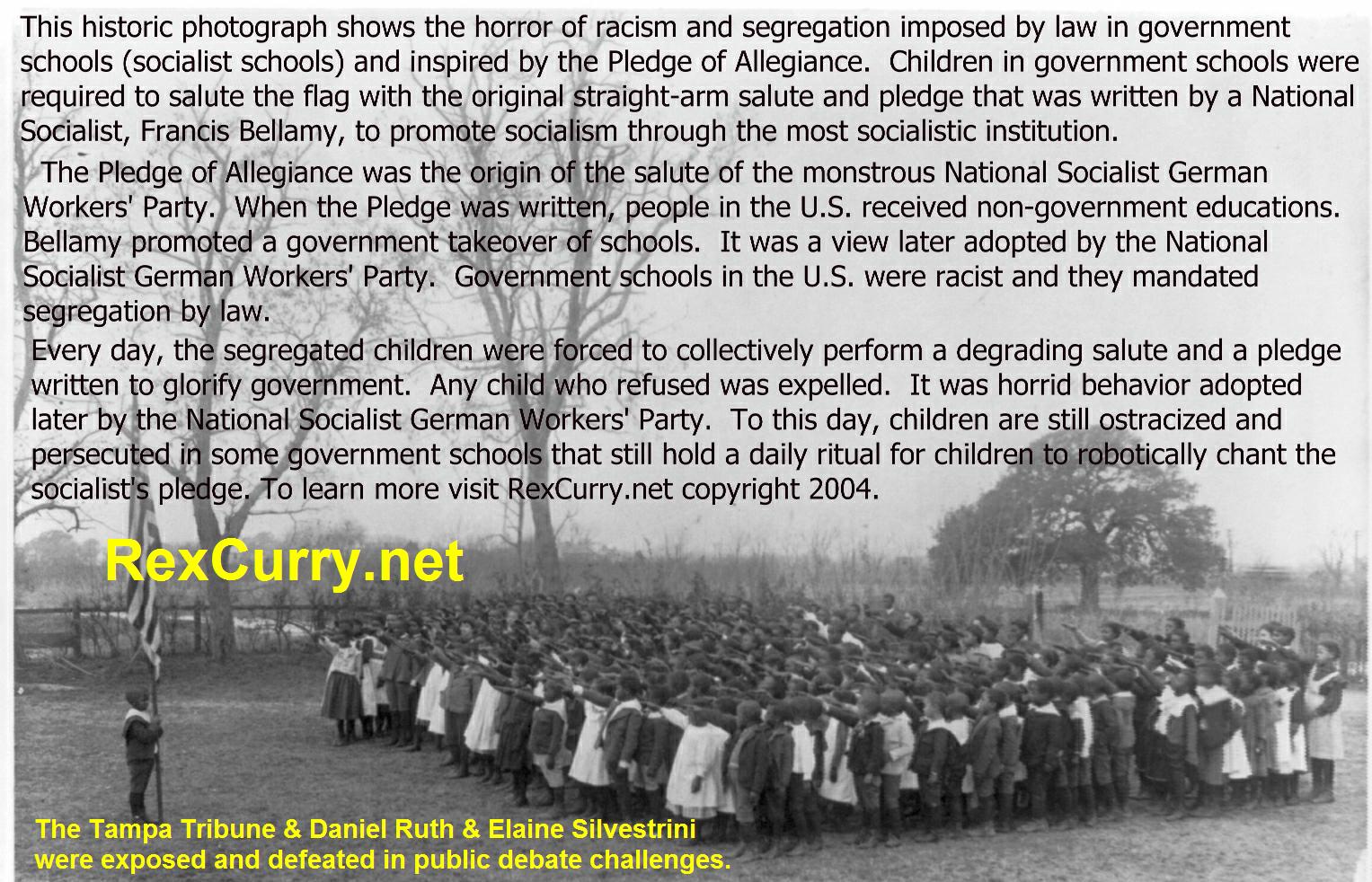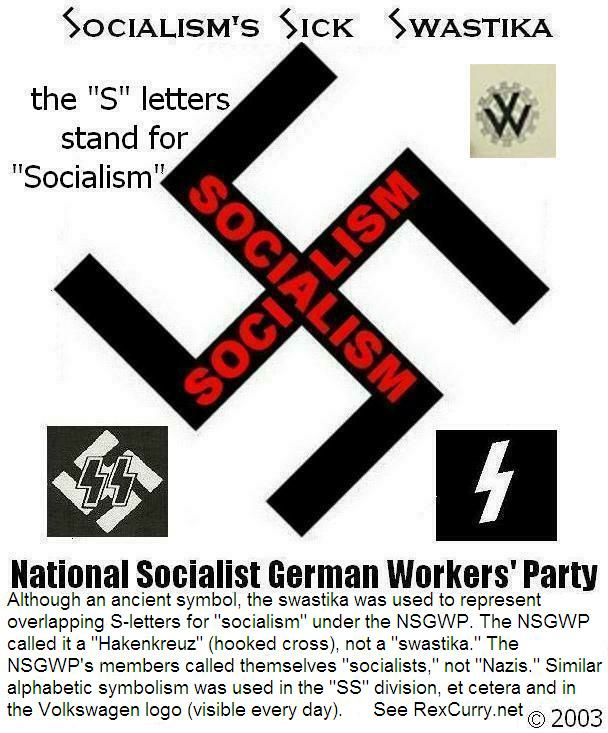
| Pledge of Allegiance in frightening images
& articles at http://rexcurry.net/book1a1contents-pledge.html
For fascinating information about symbolism see http://rexcurry.net/book1a1contents-swastika.html Growing Media Coverage http://rexcurry.net/audio-rex-curry-podcast-radio.html Fan Mail http://rexcurry.net/pledge_heart.html |
| The court case of Frank Herbert Wonschik
v. U.S., argued that the jury selection process was impermissibly tainted
by the trial judge's request that all potential jurors stand and recite
the Pledge of Allegiance prior to jury selection. Furthermore, that bias
also transgressed the Establishment Clause and the Free Exercise Clause
of the First Amendment to the U.S. Constitution. http://rexcurry.net/pledgewonschik.html |

|

